Let’s be honest with each other here…
For a lot of your team, time tracking sucks.
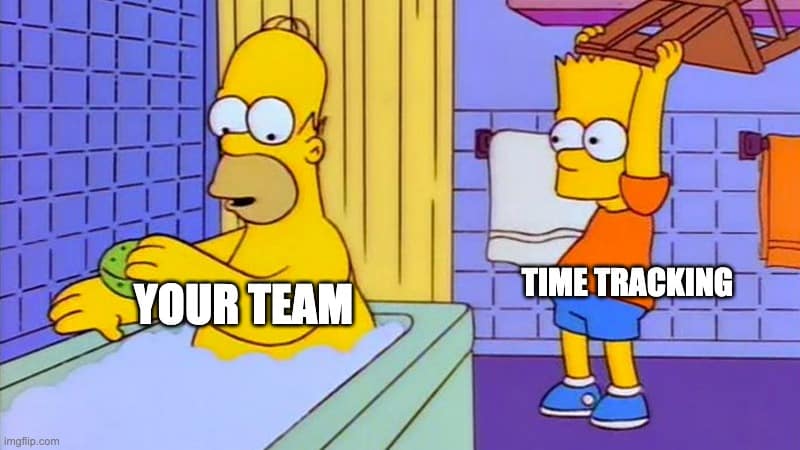
And getting your team to track their time can be a nightmare. Take a scroll through any Reddit thread or forum talking about time tracking and you’ll find comments like these…
“I never want to work somewhere with timesheets ever again”
“I have (fake) PTSD from it at my new job where I do not time track.”
“I had to fill out daily reports at my previous job and I bullshitted that too lol”
“…f****** stupid. How could you ever prove hours were reported truthfully and accurately?”
“I made most of it up and frequently got in the s*** for overbilling against admin time …. F*** it. So glad I don’t do it anymore!”
Ouch. 💀💀💀
You’re probably promoting time tracking for reasons such as
- “to see if we need additional staffing”
- “to better manage resources”
- “to assess the profitability of each project”
Perfectly good reasons to track time as a team.
But your team doesn’t really give a 💩.
I first started tracking my time in 2019 at a digital marketing agency I used to work for.
My initial thoughts?
“Wtf am I doing this for?”
Now, the process was pretty straightforward. But I just didn’t see the value in it.
I was new to the agency world and thought this was a ploy to monitor my performance.
You can dress up time tracking however you like. But at the end of the day, it’s just another repetitive, mundane task.
Doing laundry? Life admin.
Tracking time? Work admin.

Reasons why your employees are bad at tracking their time
Time tracking is inherently an unnatural task.
You don’t go about your day-to-day life tracking your time.
Imagine if you tracked your time every time you had a shower or made yourself a coffee.
It just doesn’t feel natural, right?
Most of the time, your team will feel the same.
Here are some of my top reasons, from personal experience, for why your team will be bad at time tracking. 👇
1. Timekeeping interrupts workflow
I took this from a post I came across on LinkedIn. It’s from 2014, but it still rings true.
“Timekeeping and work logging detract from this beautifully constructive task and interrupt it.”
I 100% agree with this one. Time tracking can get in the way of work.
How do you get past it?
Habit.
I hated time tracking at first. But it does become natural after a while.
But this depends on your time tracking process.
Manual timesheets? Good luck! 😀
Your time tracking process needs to be as simple as possible.
One-click timers used within Toggl Track make time tracking super easy.
It takes me a few seconds to switch my timer to a different task (especially if projects and tasks are already set up).
- Type in your “time entry description”
- Find your client
- Select what “project” you’re working on
- Start the timer
Easy!
2. Time tracking makes for dishonest people
Imagine this.
Someone from your team has just stepped into the office on a Monday morning. They’ve bumped into one of their co-workers, and they’ve decided to go grab their morning coffee.
It’s a Monday morning, so they’re both chatting about what they did over the weekend.
Normal, right?
20 minutes have gone by, and they panic and forget that they’re now supposed to be tracking their time.
Now, this type of office encounter happens all the time. It’s a normal part of office life.
But the 20 minutes they’ve just spent chatting in the office kitchen? That’ll be filed under “morning meeting.”
Left the office early to pick up the kids? “Emails.”
Now, I’m not saying all your employees will get creative with their time entries, but time tracking can certainly encourage it.
I was guilty of this when I worked at a digital marketing agency.
Why?
The data was being used to snoop on us as a team.
“People keep finishing work a couple of minutes early. They aren’t working hard enough!”
“Who’s not doing overtime!?”
“Why is [name] spending so much time on X!?”
Managers just assumed that people were not working “hard enough.” Instead of speaking to the team to see if there were any issues or if anyone needed support.
The truth was that people were getting burnt out because of the lack of resources and staff. Which meant the staff turnover rate was pretty high.
Time tracking data can be beneficial for you and your team. But only if utilized properly and in the right context.
3. Your employees feel like they’re being policed
This is probably the biggest reason your team will hate time tracking.
What would your team rather do…work on their next creative project or track time for their next creative project?
A pretty straightforward answer.
As minuscule as it is, the additional work can increase stress and create resentment.
But what’s really driving that response is the feeling of being policed, or worse, that there is a lack of trust.
“I got told last year I wasn’t considered for promotion because my time recording had been slow.”
A perfect example of a company using time tracking for all the wrong reasons.
Your team will be incredibly unmotivated to track their time if they feel their time tracking data is being used as part of reviews.
And will ultimately lead to responses like this:
“This is a huge part of why I left my last job…so in the end, I made most of it up…F*** it. So glad I don’t do it anymore!” – time tracking’s no.1 fan
😢
4. Timesheets suck
Now, I’ve never had to use manual timesheets in the past.
But jump on to any time tracking Reddit thread and you’ll find comments like this:
“I get timesheets, but I am not filling them out lmao.”
Timesheets, especially manual spreadsheets, are typically not user-friendly.
Which can often lead to timesheet entries becoming too distracting and intrusive.
This can result in your team forgetting to complete them or even faking them at the end of each week.
How to motivate your employees to track time
Having a time tracking system in place is the easy part. Getting your employees to actually use it is the most difficult.
Now, it’s not impossible to do; you just gotta approach it the right way.
1. Don’t expect them to do something you’re not willing to do yourself
This one is key if you want to avoid your employees thinking that they’re being snooped on.
You’re smart, so you probably have a good idea of how valuable time tracking can be.
But if you don’t do it yourself, how can you expect your employees to follow suit?
Make sure you understand how it will benefit your business and then communicate your knowledge to your team.
You have to set an example.
2. Avoid complicated systems
Time tracking systems, especially manual timesheets, can be a flipping nightmare.
Just look at the search results for “timesheet excel” on Google Images. You’ll be presented with timesheet templates that look, quite frankly, horrible to use.
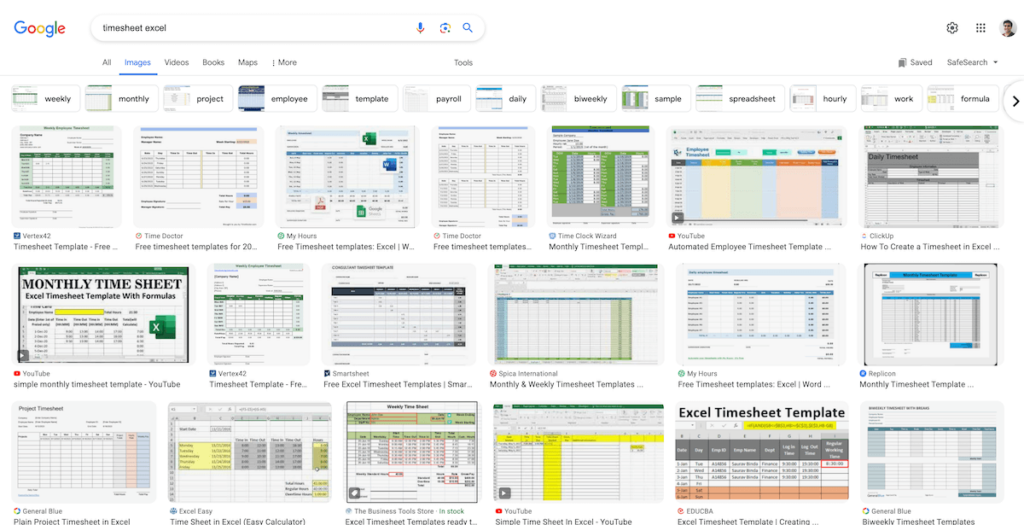
Imagine starting a new job and having to stare at one of those timesheets every day. 💀
Now, time tracking doesn’t have to be the devil’s work.
Time tracking software can help a lot. We have two different modes of tracking time within Toggl Track.
“Timer Mode,” where your employees can start and stop tracking time in seconds.
Or “Manual Mode” where you or they can manually enter time tracking data.
Both are super easy to start using.
Ask yourself if the time tracking system is easy enough for your staff to use. Your team will be the ones who will be using it every day.
3. Make sure you have a solid setup
If you want time tracking to work in a meaningful way, you will need a setup that works well.
Your reports will be useless if people don’t track their time correctly.
Before your team starts tracking, explain to all involved the proper way to track their time. Toggl Track allows you to group your data in various categories (projects, clients, tags, etc.) within workspaces. This is a great way to keep everything organized and get the most out of time tracking data.
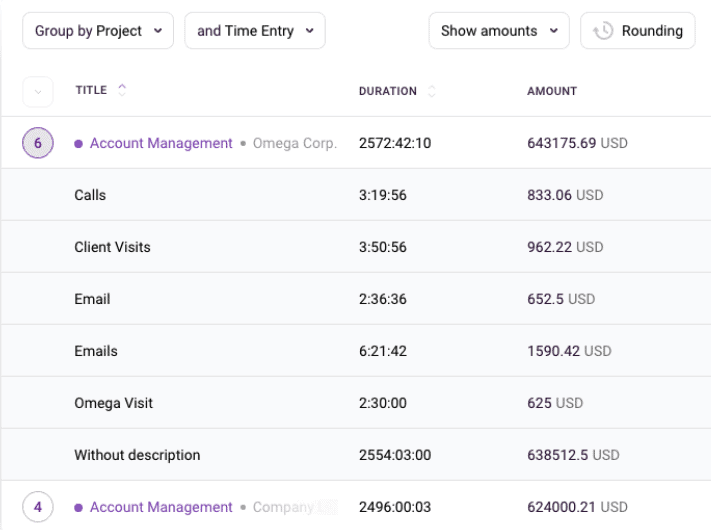
🧠 Further reading: Data Structure in Toggl Track
If you’re worried about your data getting messy, “Access rights and privileges” inside of Toggl Track is a good way to restrict who can see and create what.

You can also create rules to make sure your time reports are always orderly with “locking timesheets.”

4. Communicate the benefit of time tracking
Time tracking isn’t just your business—it’s also your employees’.
Trust is crucial for any successful cooperation.
Forcing your employees to track their time without any explanation will breed a culture of suspicion. It can lead to people cheating with their time logs.
To avoid this, make sure everyone in your team understands the benefits of time tracking.
Most importantly, how it benefits them and not just your company.
Honesty and clear communication go a long way in establishing trust.
Remember that employee productivity often boils down to good management practices, so keep communication open and free.
5. Promote honest hours
You need to make it clear from the start that time tracking is a task for good.
Time tracking should be seen as a task to help prevent burnout and make your team’s lives easier. Not monitor your employees.
🧠 Further reading: Why We Don’t Believe in Surveillance
The best benefit of tracking time is to understand where all that time is going. But forcing people to bill eight hours a day doesn’t work in many settings.
Remember the “morning coffee” example above? Some will tend to turn their morning coffee into billable hours.
Not great and incredibly pointless for your business. Getting an accurate picture is much more important than chasing empty hours.
If you want a true picture of efficiency, make sure you create an environment where people are free to report honestly.
6. Follow up and ask for feedback
Your employees are the biggest experts in your business.
Because they work with the finer points of your business day after day, their feedback is invaluable to making good decisions and adjustments.
Keep checking in with them to see how your team is adapting to time tracking. If your team has any problems, concerns, or suggestions, use that feedback to improve your system.
Never settle for the “you’re just gonna have to deal with it” approach.
Listen to your team and ask questions such as:
- What do you like about our time tracking system?
- What do you dislike about our time tracking system?
- Are there any bottlenecks within the system?
- What can we do to improve it?
- What can I do as a team lead to improve it?
I like the questions Hypercontext have mentioned in their blog post “10 Team meeting questions managers are asking.” A lot of them can be applied in this scenario.
Remember, the easier it is for them, the more likely they will stick with the habit!
Also, when you start analyzing the time tracking data, include your employees in the process.
Together you’ll have a better chance of discovering things that could be done differently.
Good to know 💡
We have an excellent support team here at Toggl Track. We regularly take user feedback on board and turn it into product updates.
Is your team hitting some roadblock with their time tracking? Reach out to us via chat inside of our web app!
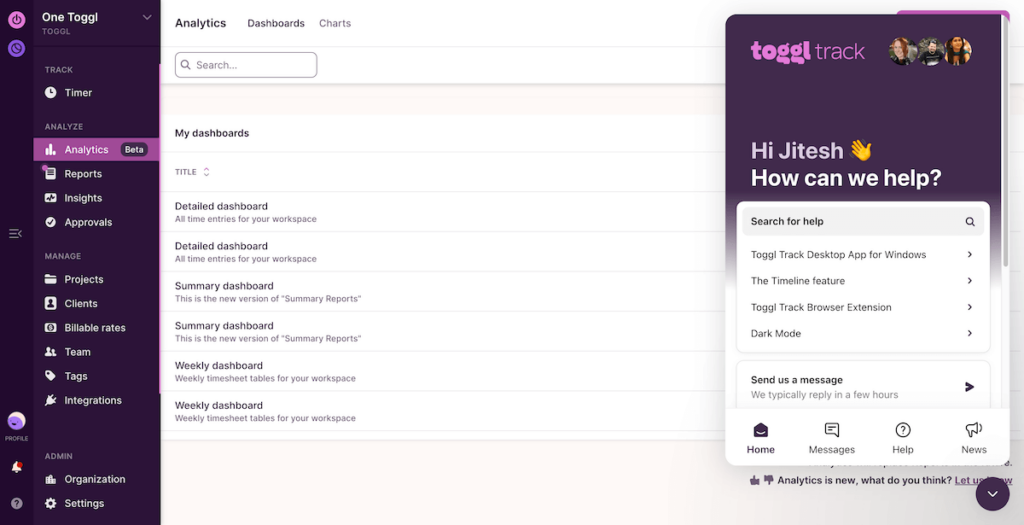
7. Make it a meme
This idea comes to us from a user of ours in Amsterdam.
Every Friday, he wears his Toggl T-shirt around the office, walking around and reminding everyone to take care of their Toggling.
When the T-shirt isn’t available, he sends these brilliant memes to motivate his team to add in all their (forgotten and misplaced) hours by the end of the day.

Email is a common way to send reminders. However, by adding interesting images and jokes to your message, there’s a better chance your reminders won’t be ignored or forgotten.
We all have moments when we simply forget to start tracking—especially when time tracking is something new!
Luckily there are tracking reminders in both the Toggl Track web app and our browser extension for Chrome. These reminders do work. Users also have an option to create email reminders inside of the web app.
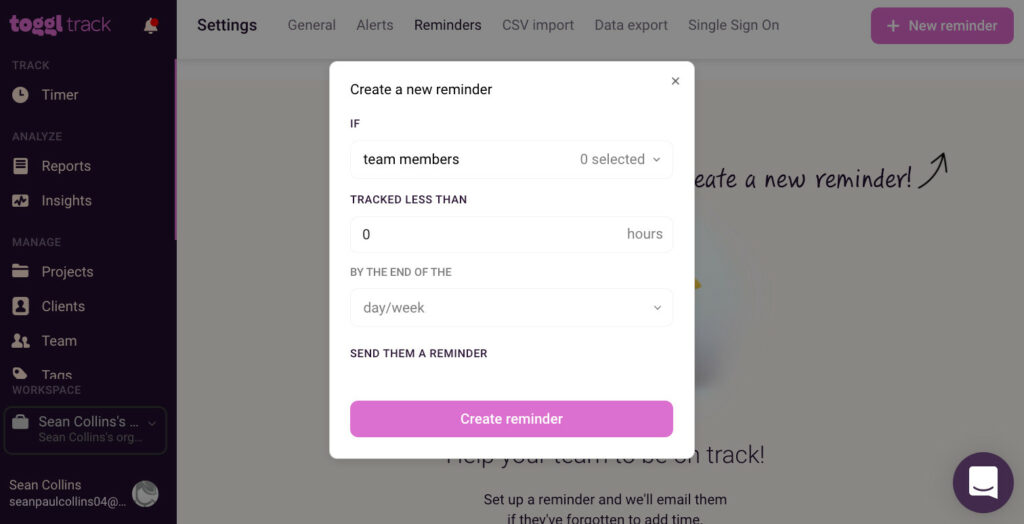
When team members don’t reach their target, we will email them automatically—either the next day or the first day of the next week (depending on the frequency you’ve set).
It’s that simple!
Final thoughts
I want to finish by saying the advice above came from my very own personal experience of tracking time. Both as an end-user and as a manager.
Create a culture of trust and honesty if you really want to motivate your employees to track time.
Give your team complete autonomy and freedom.
It’ll pay off. Trust me!
Sean is a Content Marketer at Toggl. He's been involved in SEO and Content Marketing since 2017. Before working for Toggl, Sean ran SEO at a digital marketing agency—so he's all too familiar with time tracking and project management.
![Harvest vs Toggl: A Definitive Comparison [January 2024]](https://toggl.com/blog/wp-content/uploads/2023/11/harvest-vs-toggl-track-746x394.jpg)

![10 Top DeskTime Alternatives for 2024 [With Comparison]](https://toggl.com/blog/wp-content/uploads/2024/02/desktime-alternatives-746x394.jpg)